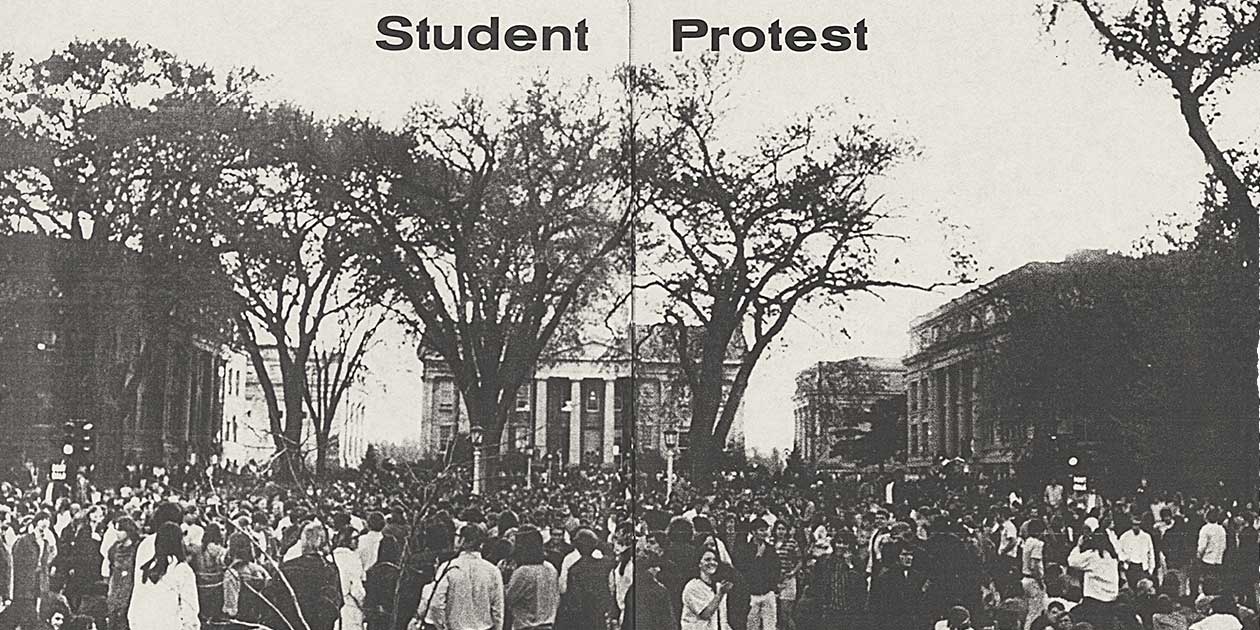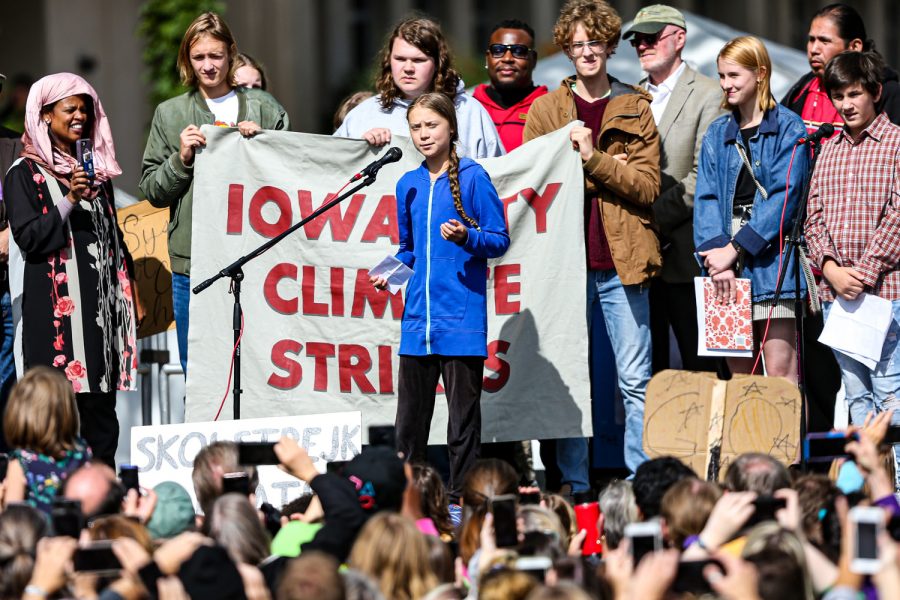Why Iowa?
In 2019, UI faculty member Kirsten Kumpf Baele (German, CLAS) prepared a lengthy proposal for the University of Iowa to receive a sapling, including letters of support from the local Jewish community, the UNESCO City of Literature, and campus leaders. Her application was approved in 2020, and in spring 2022, following a wait due to COVID-19, a descendant of Anne’s chestnut tree was planted at the University of Iowa.
The 13th sapling in the U.S. was planted on the northeast corner of the Pentacrest on Friday, April 29, 2022. The green space that comprises four monumental limestone buildings and the original state capital of Iowa is the unofficial heart of the community—the place where campus and town meet.
A Literary Legacy
There are multiple reasons why this tree makes sense in this place at this time. First, Anne Frank is an important writer whose words have been translated and read in more than 70 languages. As a UNESCO City of Literature, Iowa City is home to the world-renowned Iowa Writers’ Workshop (IWP). Started in 1936, the workshop has 17 Pulitzer Prize winners among its alumni. It is also home to the International Writing Program, which since its inception in 1967, has provided a safe residential writing experience to more than 1,500 authors from more than 150 countries. Cultural diplomacy is core to the IWP’s mission, including building bridges across cultural chasms.
Anne Frank and Iowa have a longstanding history. In 1940, as part of an international pen-pal exchange, Anne Frank and her sister, Margot, exchanged letters with two young women, Betty and Juanita Wagner, in Danville, Iowa. This correspondence is on public display at the Danville Station Museum. The Anne Frank Initiative at the University of Iowa is eager to build on its relationship with the museum that grew out of the Anne Frank sapling project and the Provost’s Global Forum.
The Pentacrest
The placement of the tree on the UI Pentacrest is also relevant to its legacy. The Pentacrest has long been a space associated with free speech, protest, and celebration. During the 1960s and early 1970s, it was the center of protests against the war in Vietnam, most notably in late 1967 when blood was deliberately spilt on the east steps of the Old Capitol and there was a signing of anti-war petitions in blood. In October 1972, what is believed to have been the largest political rally held on the Pentacrest occurred with an appearance by presidential candidate George McGovern.


In the 1980s, protesters erected a small tent village on the Pentacrest, demanding divestment from South Africa by the university. In the summer of 2020, the Pentacrest was the site of Black Lives Matter protests, where young activists demanded reparations from Iowa City. A few blocks away, at the intersection of Iowa Avenue and Dubuque Street, climate activist Greta Thunberg spoke to thousands in October 2019, and then marched with local youth who demanded that the UI cease the use of coal.

Tree Campus
The University of Iowa has special designation by the Arbor Day Foundation as a Tree Campus USA and was recently awarded a level II accreditation by the ArbNet Arboretum Accreditation Program for meeting advanced standards that recognize the UI campus as an arboretum dedicated to public education and engagement.
There is an exceptional variety of trees and woody plant species on the UI campus, including more than 8,000 trees of more than 300 total species, historic and rare trees, and several state champion trees, including the state champion American elm located on the Pentacrest in front of Schaeffer Hall. (Like the American chestnut, the American elm population was also decimated by blight.)
Other special trees include a grafted apple from the last remaining, documented Johnny Appleseed Tree, a William Penn Oak, and a literary grove featuring trees associated with authors, such as Henry David Thoreau and William Faulkner. More information is located on the UI Campus Arboretum web page.
The Moment
The tree is very much aligned with the worldwide pandemic in terms of its timing. Kumpf Baele wrote the application just months before the outbreak of COVID-19 began in China. Its planting had to be postponed not once but twice as the UI campus was nearly entirely closed down. The 2020-21 academic year was one when many students, faculty, staff, and community members experienced deep isolation as we grappled with fear, death, and societal restrictions. Although there are significant differences between this period and that experienced by Anne Frank, her family, and so many who suffered and died during World War II, the COVID pandemic has nonetheless been devastating for many around the world.
We hoped that with the planting of the tree in April 2022, the world would be in a new place with the most deadly waves of the pandemic behind us. We imagine a world that is coming out of a period of isolation and fear, not entirely unlike the world emerging from WWII. We hope this tree will inspire hope for the possibilities ahead of us and give special attention to the creative imagination of young people.